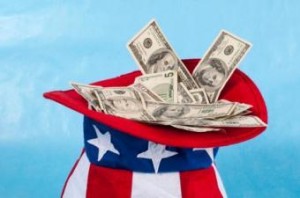 The U.S. economy continued to outperform in the third quarter as consumer and government spending provided a boost to gross domestic product (GDP).
The U.S. economy continued to outperform in the third quarter as consumer and government spending provided a boost to gross domestic product (GDP).
According to a second estimate from the Commerce Department, GDP grew at an annualized rate of 3.9 percent in July, August, and September, down slightly from the second quarter's growth rate of 4.6 percent and up from the first quarter's 2.1 percent downturn.
A group of economists surveyed by Econoday had forecast a growth rate of 3.3 percent, a slight cut from the government's initial estimate of 3.5 percent.
The Commerce Department said its second estimate received a lift from private inventory investment, which was down less than previously thought, and larger increases in consumer spending and nonresidential fixed investment than were first reported. That was offset in part by a smaller increase in exports.
According to the department's Bureau of Economic Analysis (BEA), consumer spending increased 2.2 percent in the second quarter, up from a first estimate of 1.8 percent. Spending increased for both durable goods (8.7 percent) and non-durables (2.2 percent).
The price index for domestic purchases, a gauge of prices paid by American consumers, rose 1.4 percent, 0.1 percentage points higher than in the advance estimate.
Meanwhile, nonresidential fixed investment increased 7.1 percent, fueled largely by a 10.7 percent increase in investing in equipment.
Government spending also contributed to the third-quarter's expansion. According to BEA, real federal government consumption expenditures increased 9.9 percent in Q3, a marked turnaround from a decline of 0.9 percent in the second quarter. Much of that increase came from defense spending, which was up 16 percent.
The continued good news for the third quarter comes as Japan heads into a new recession and economic woes continue in the eurozone.
With GDP looking relatively stable compared to the rest of the globe and employment indicators looking strong, economists say the Federal Reserve—which recently concluded its monthly bond-buying program launched to stimulate the economy—has more reason to consider moving ahead to hike interest rates sooner rather than later. While many investors expect the first increase to be around the middle of the year, some analysts say it could be earlier than that.
"The unexpected strength of third-quarter GDP growth ... is another reason to expect the Fed to begin normalising interest rates sooner than expected next year," said Paul Ashworth, chief U.S. economist at Capital Economics. "We still anticipate the first rate hike coming in March next year."

 theMReport.com Your trusted source for mortgage banking news
theMReport.com Your trusted source for mortgage banking news








